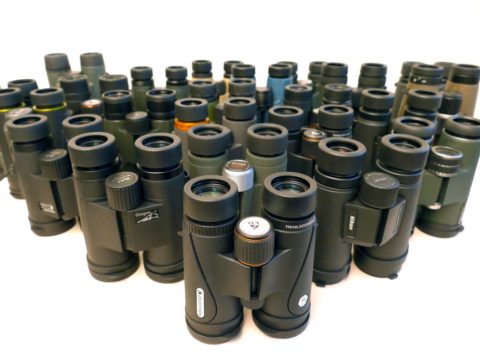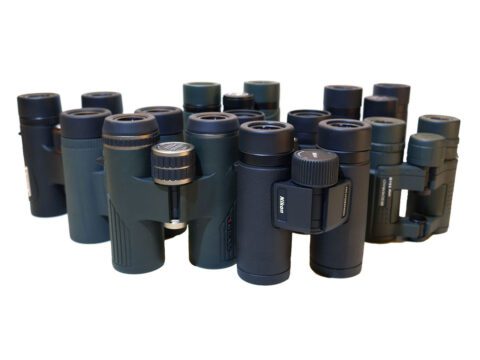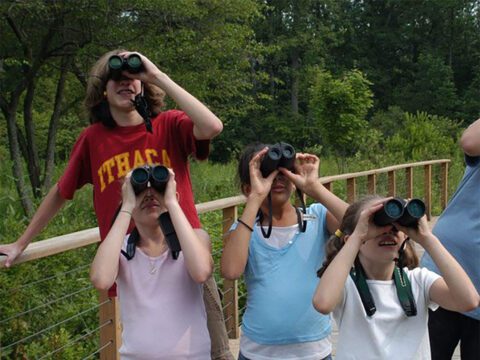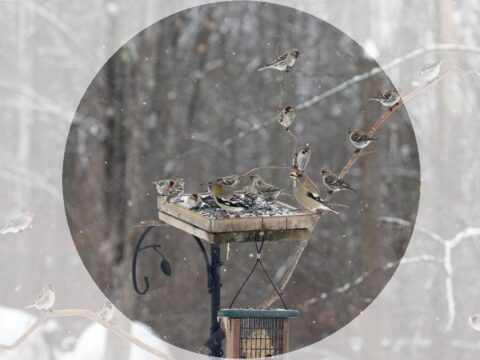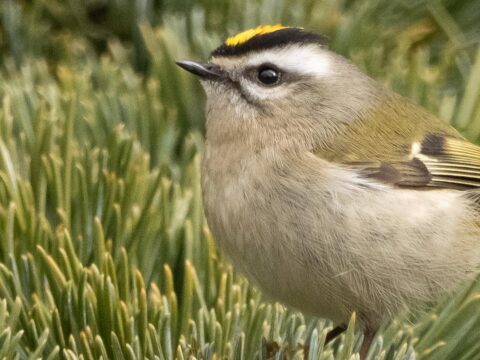The Best Affordable Compact Binoculars (8×32): Our Review
Thanks to ever-improving optics and a new crop of compact designs, it's now possible to find small, comfortable, bright binoculars for less than $500.
August 16, 2023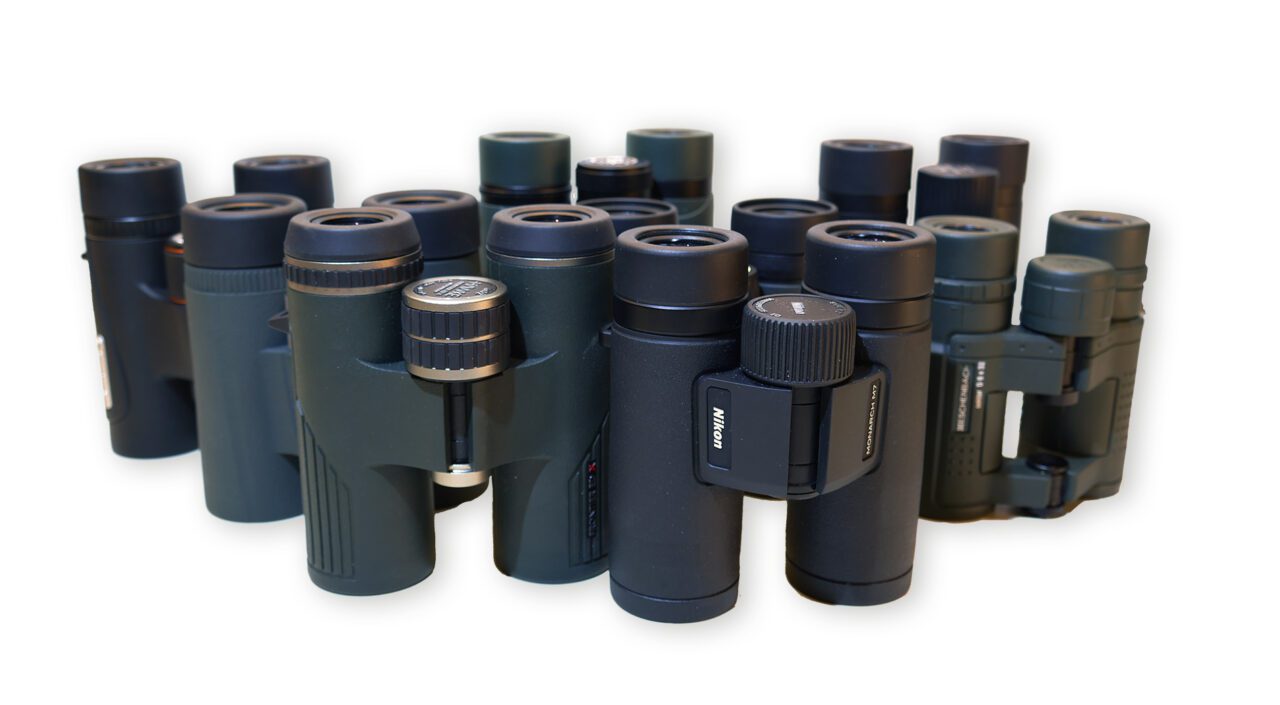
More on Binoculars
An excerpt of this article appeared in the Autumn 2023 issue of Living Bird magazine. Subscribe now.
It’s an age-old birding conundrum: how to find binoculars that deliver a great image and excellent portability, all without breaking the bank. The smaller lenses found in compact binoculars help make them light and comfortable, but those smaller optics usually meant you’d have to settle for a dimmer image than in a “full-size” 8×42 binocular. At least, that was the conventional wisdom.
Now, with a new generation of excellent and affordable optics, we’re finding some great options among compact binoculars—models with an objective lens between 30 and 34 mm (that’s the “32” in “8×32”). In fact after conducting this review, we’d argue a few compact models can stand on an even footing with similarly priced full-size binoculars, all while saving weight and reducing fatigue. So let’s take a look at compact binoculars and find out which pairs can give your birdwatching a boost—without taking up a lot of room.
Why choose Compact Binoculars (8×32) Vs. Full Size (8×42)?
Advantages
- Smaller and lighter: Compact binoculars are smaller and lighter overall—the 24 pairs in our review averaged about 3/4″ shorter and nearly a half-pound lighter than an average 8×42. (Learn more with our comparison of size and weight for more than 50 models.)
- Easier to pack: Smaller size makes compacts handy for anyone trying to save weight or space, whether carrying other gear (photographers and backpackers) or looking to store a pair safely out of sight in the glove compartment.
- More comfortable: Compacts can be more comfortable for people with small hands or a smaller frame overall. And they can be great for young birders who themselves haven’t reached full size.
- Similar or better field of view: Although some compact binoculars can suffer from tunnel vision, giving the impression of a narrow field of view (see Disadvantages, below), it turns out that most compact models have the same or slightly larger field of view than their full-sized counterparts.
Disadvantages
- Limitations in low light: If you’re birding at dawn, dusk, or in dense woods, a compact binocular’s smaller objective lenses may struggle with brightness. A 32-mm lens just doesn’t let in as much light as a full-size binocular’s 42-mm lens. That said, our top-rated compact binoculars provided amazing images even in very low light conditions (including in a cave).
- Variable quality: The compact binocular market has a split personality. Some models are designed to be a fully capable birding binocular with great optics; others aim to offer a decent image in the smallest, lightest, or most comfortable package possible. And still others are trying to be a budget option. As a result, we found a wide range of performance in the models we tested. Be careful especially when choosing in the lower end of the price range, and be sure to test models in the hand before buying. (See our tips on how to test binoculars.)
- Issues with tunnel vision: Compact binoculars have a smaller “exit pupil” than full-size binoculars, meaning a narrower beam of light enters the viewer’s eye. This can give a sense of tunnel vision in some models. It can be fixed (at least partially) by adjusting the eyecups, but this can be tricky.
Here’s How We Rated 24 Pairs of Compact Binoculars
We tested 24 models of compact binoculars. With more than 60 compact models currently on the market, we were selective, and we focused on relatively affordable options ranging from around $100 to more than $500.
This graph shows our ratings and the list price of each binocular in our review. (For our review and analysis methods, see the end of this article.)
Hover over or tap each point to bring up details about the binoculars.
The rating score is a combination of the binocular’s image quality, comfort/feel, and perceived build quality (see Review Methods at the end of this article). Binocular prices vary through time and from retailer to retailer. For consistency, we quote prices as MSRP as of August 2023. Mobile users: rotate your device for a better view.
Caveat: binocular rankings are inherently subjective. We do everything we can to make them objective—multiple testers, clear ranking criteria, data analysis—but people’s needs and preferences differ in ways that no single number can capture perfectly. So don’t worry too much about exactly where each binocular sits on the graph, and be sure to try out multiple pairs.
Our Top Picks
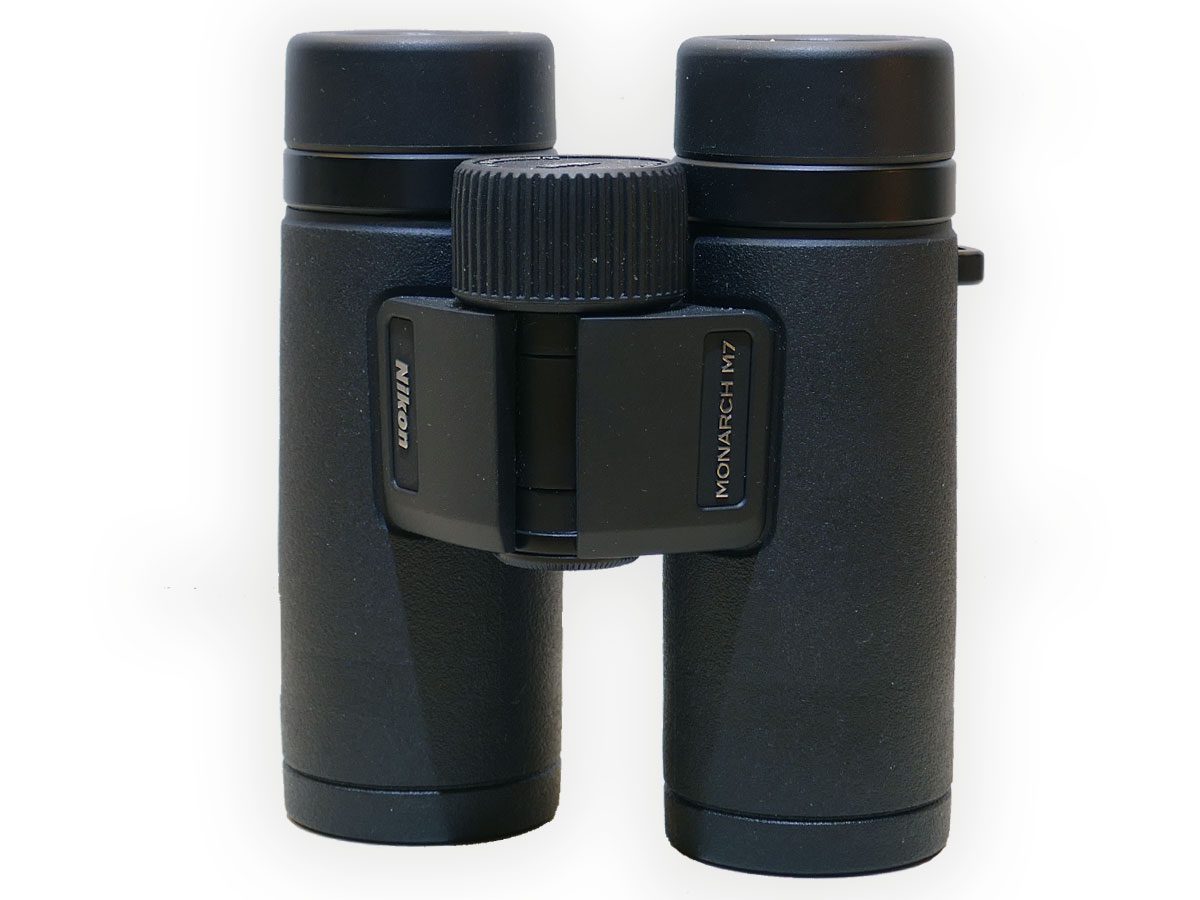
Five compact binoculars made our Top Picks list. All five offer a very bright, colorful image and pleasing ergonomics. Holding them up to our eyes, they all produced big, sharp images without the tunnel vision effects mentioned above. These are binoculars that bring out the joy in birdwatching. They find focus easily, the lenses cut through glare, and images fill your eyes with sharpness and color virtually from edge to edge. Whether you’re drinking in the details of a lifer you’ve waited years to see, or simply appreciating the subtle markings and interplay of colors on your favorite common birds, these Top Picks will remind you each day of why you love looking at birds.
In virtually all light conditions, these binoculars hold their own optically against similarly priced 8×42 designs—and they may actually top 8x42s in matters of comfort and ease of carrying.
Here’s how we ranked them (highest to lowest):
- Nikon Monarch M7 ($480)
- Celestron TrailSeeker ED ($340)
- Tied: Hawke Frontier ED X ($560) and German Precision Optics Passion ED ($580)
- Kowa BDII ($400)
Honorable Mention: Best of the Small
If you’re looking for binoculars to be as light and unobtrusive as possible, we recommend the Opticron Discovery WA ED ($289). Though they’re not in the top tier optically, these bins are tiny—just 4.25 inches long and a full 3.5 ounces lighter than an average compact (11 oz lighter than an average 8×42). They provide a clear, relatively bright image, great close focus, a wide field of view, and a comfortable focus wheel. Our runner-up is the nearly-as-small Vortex Diamondback HD ($260)—its image is noticeably brighter than the Opticron Discovery, but it’s also a bit heavier and does not adjust to fit narrow-set eyes as well.
Honorable Mention: Best Budget Pick
The Nikon ProStaff P7 ($180) is a sturdy, if a bit bulky, binocular with a consistently bright image and wide field of view. It’s not perfect—there’s some distortion at the image edge and when panning—but at less than $200, it’s an excellent value for feeder watching and quick spotting.
Note: tap links to see our full review notes for each model.
Solid Choices
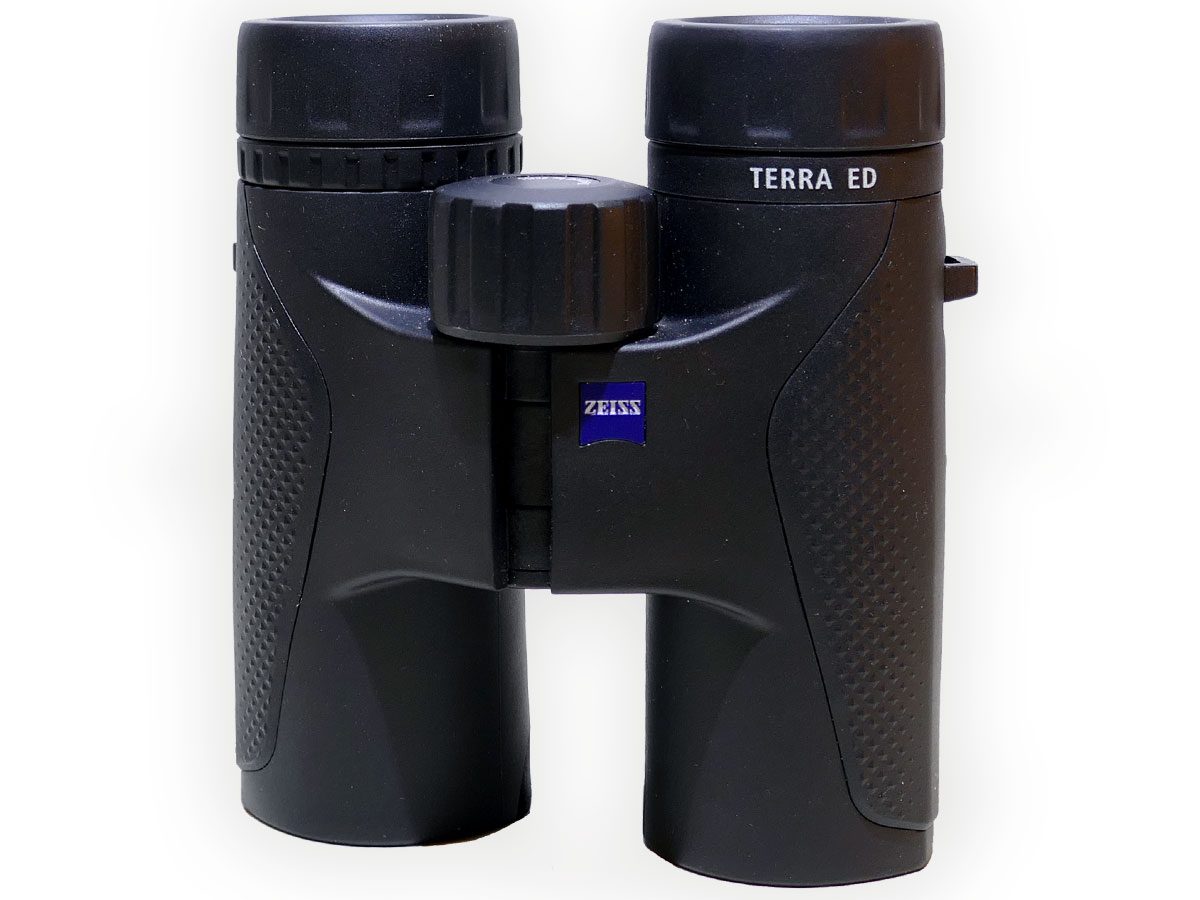
Some binoculars provide a great image but the feel is just a little off—perhaps the focus wheel is a little stiff or the eyecups are fussy. Or the reverse: they might offer a lovely feel, but the image is a notch below perfect. We rate these as our Solid Choices—binoculars that don’t quite match up to our Top Picks but provide an overall very good experience.
In our testing, we were impressed by many aspects of the Solid Choices—the brilliant color and crispness of the Maven B.3, or the lovely balance and feel of the Vanguard Endeavor, for example. Some of our testers found the Maven’s focus wheel a touch stiff, while others wished for just a bit more sharpness in the Vanguards.
We enjoyed birding with all our Solid Choice picks, and your own individual preferences could well tip some of these into your personal Top Pick. That’s why it’s worth getting your hands on as many of these models as possible to put them through their paces. (Click through to our individual reviews for more details on each binocular.)
Here’s how we rated the eight binoculars in our Solid Choice tier (highest to lowest):
- 3-way tie: Celestron TrailSeeker ($280), Zeiss Terra ED ($400), Maven B.3 ($550)
- 2-way tie: Nikon ProStaff P7 ($180), Kowa SVII ($239)
- Vortex Diamondback HD ($260)
- 2-way tie: Vanguard Endeavor ED II ($270), Opticron Discovery WA ED ($289)
Note: tap the links to see our full review notes for each model. Check back soon for more full reviews.
Middle Ground Options
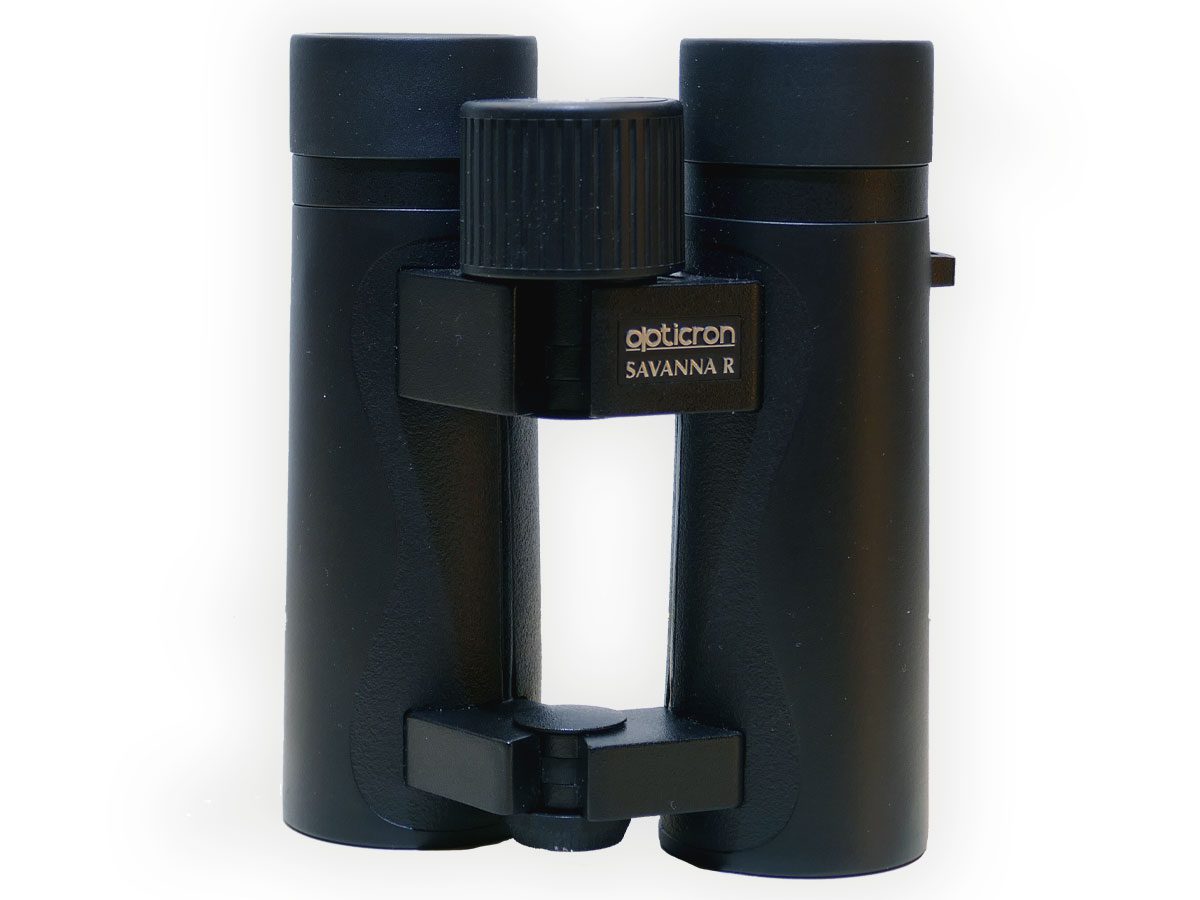
The Middle Ground features binoculars that make some compromises in image quality or build, typically in favor of a lower price point. These binoculars may still be perfectly suited to situations such as watching bird feeders—where birds are at medium to close range, out in the open, not moving around too much, and generally in strong light. If this describes your typical birdwatching setup, there may be no strong reason to spend more.
Here’s how we rated the eight binoculars in the Middle Ground tier (highest to lowest):
- 2-way tie: Bushnell Prime ($120), Opticron Savanna R PC Oasis ($169)
- Celestron Nature DX ($160)
- 3-way tie: Alpen Wings ($130); Hawke Nature-Trek ($200); Bresser Pirsch ($220)
- 2-way tie: Opticron Adventurer II WP ($129); Eschenbach Arena D ($240)
We judged three of the binoculars in our review as not well suited to birdwatching. Given the many demands of birdwatching, including brightness, sharpness, ease of focus, wide field of view, and long-term comfort, it’s hard to get the tradeoffs just right. After in-depth, side-by-side testing with other models in the review, we did not feel that the combination of features in the Alpen Magnaview ($80), Eschenbach Sektor D ($420), and Snypex Knight D-ED ($620) were suitable for birdwatching—though they may perform adequately in other pursuits (such as at sporting events).
Note: tap the links to see our full review notes for each model. Check back soon for more full reviews.
Review METHODS
Reviewing binoculars is inherently subjective, while the goal of reviews is to be as objective as possible. For this review we combined the two approaches: Our ratings are based on qualitative evaluations of binocular performance as well as a quantitative analysis of ratings from a wide range of people. Full disclosure: Celestron and Zeiss have sponsorship agreements with the Cornell Lab of Ornithology.
Quantitative: Over the course of several months, 44 people participated in 200 head-to-head tests between two pairs of binoculars. Testers included novice, intermediate, and expert birders ranging in age from 11 to 76 and including men, women, and nonbinary people. After using and comparing two arbitrarily chosen binoculars for 5–10 minutes, testers recorded which pair they preferred in terms of image quality, comfort/feel, and build quality. They also recorded which pair was their overall favorite of the two. Testers referred to each pair of binoculars using a two-letter code to minimize any brand-recognition bias. The price levels were not disclosed to any of the testers.
We then asked Cornell Lab postdoctoral associate Eliot Miller to analyze the results using a method that would give each binocular an overall ranking relative to the others. Even though each pair wasn’t tested against every other pair, the many head-to-head tests enabled us to have high confidence that our final rankings would reflect the overall preferences of our testers. (Miller had previously used this same analysis technique in our review of 8×42 binoculars and to identify a dominance hierarchy among more than 100 species that visit bird feeders.)
Qualitative: Following the head-to-head tests, the three authors of this review spent over 50 hours doing deep-dive field tests on each individual pair. This allowed us to put each binocular through its paces—how did it perform over the course of an extended birding session? Did the physical elements hold up? How did the binocular perform in low light, while looking at backlit objects, or while trying to track a bird that was moving through a brushy area? How easy or comfortable were they to carry, hold, and focus? The extended time we spent with each model helped us fine-tune the quantitative testing, and to clarify the strengths and weaknesses of each individual pair.
Final Ratings: Our final ratings used the quantitative analysis as a starting point. But we recognize that birdwatchers have differing needs and preferences that are impossible to represent with a single number that applies across the board. To arrive at our final ratings we incorporated observations from our in-depth reviews. We also compressed the numerical scale to avoid giving an exaggerated impression of quality differences among what is a relatively tight field.
Acknowledgments: Many thanks to Susanna Lawson and Justin Cleveland for contacting optics companies and handling the details of optics loans. Thanks to the optics companies for loaning us binoculars for the duration of the review. Thanks to Eliot Miller for the data analysis. And thank you to the many Lab staff and members of the public who volunteered their time to try out binoculars and provide ratings.

All About Birds
is a free resource
Available for everyone,
funded by donors like you
American Kestrel by Blair Dudeck / Macaulay Library
